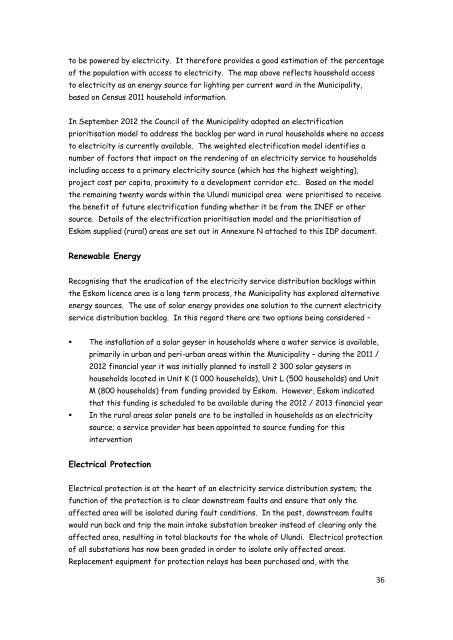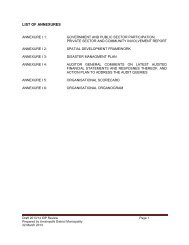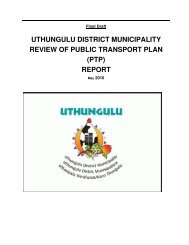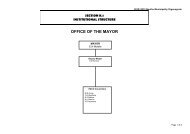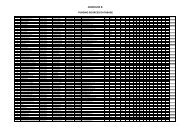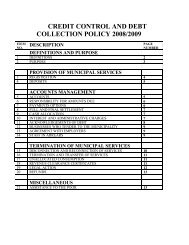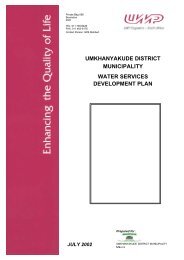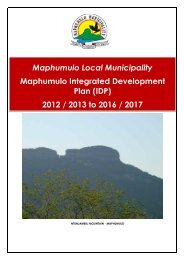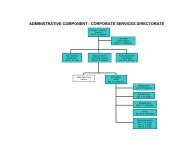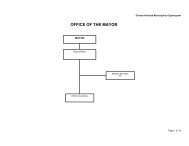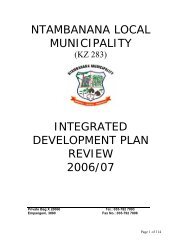Final Adopted IDP - KZN Development Planning
Final Adopted IDP - KZN Development Planning
Final Adopted IDP - KZN Development Planning
You also want an ePaper? Increase the reach of your titles
YUMPU automatically turns print PDFs into web optimized ePapers that Google loves.
to be powered by electricity. It therefore provides a good estimation of the percentage<br />
of the population with access to electricity. The map above reflects household access<br />
to electricity as an energy source for lighting per current ward in the Municipality,<br />
based on Census 2011 household information.<br />
In September 2012 the Council of the Municipality adopted an electrification<br />
prioritisation model to address the backlog per ward in rural households where no access<br />
to electricity is currently available. The weighted electrification model identifies a<br />
number of factors that impact on the rendering of an electricity service to households<br />
including access to a primary electricity source (which has the highest weighting),<br />
project cost per capita, proximity to a development corridor etc.. Based on the model<br />
the remaining twenty wards within the Ulundi municipal area were prioritised to receive<br />
the benefit of future electrification funding whether it be from the INEF or other<br />
source. Details of the electrification prioritisation model and the prioritisation of<br />
Eskom supplied (rural) areas are set out in Annexure N attached to this <strong>IDP</strong> document.<br />
Renewable Energy<br />
Recognising that the eradication of the electricity service distribution backlogs within<br />
the Eskom licence area is a long term process, the Municipality has explored alternative<br />
energy sources. The use of solar energy provides one solution to the current electricity<br />
service distribution backlog. In this regard there are two options being considered –<br />
• The installation of a solar geyser in households where a water service is available,<br />
primarily in urban and peri-urban areas within the Municipality – during the 2011 /<br />
2012 financial year it was initially planned to install 2 300 solar geysers in<br />
households located in Unit K (1 000 households), Unit L (500 households) and Unit<br />
M (800 households) from funding provided by Eskom. However, Eskom indicated<br />
that this funding is scheduled to be available during the 2012 / 2013 financial year<br />
• In the rural areas solar panels are to be installed in households as an electricity<br />
source; a service provider has been appointed to source funding for this<br />
intervention<br />
Electrical Protection<br />
Electrical protection is at the heart of an electricity service distribution system; the<br />
function of the protection is to clear downstream faults and ensure that only the<br />
affected area will be isolated during fault conditions. In the past, downstream faults<br />
would run back and trip the main intake substation breaker instead of clearing only the<br />
affected area, resulting in total blackouts for the whole of Ulundi. Electrical protection<br />
of all substations has now been graded in order to isolate only affected areas.<br />
Replacement equipment for protection relays has been purchased and, with the<br />
36


